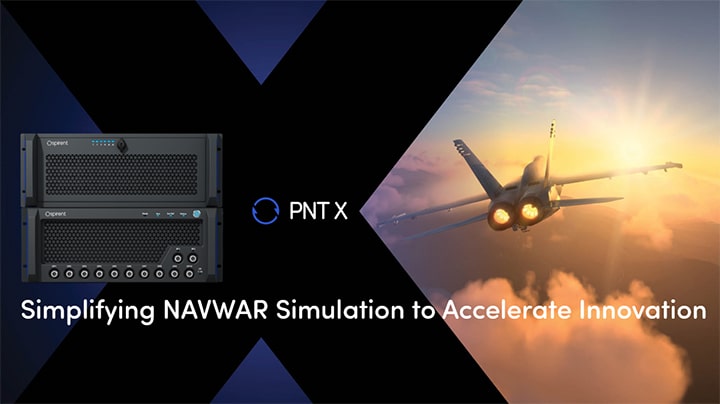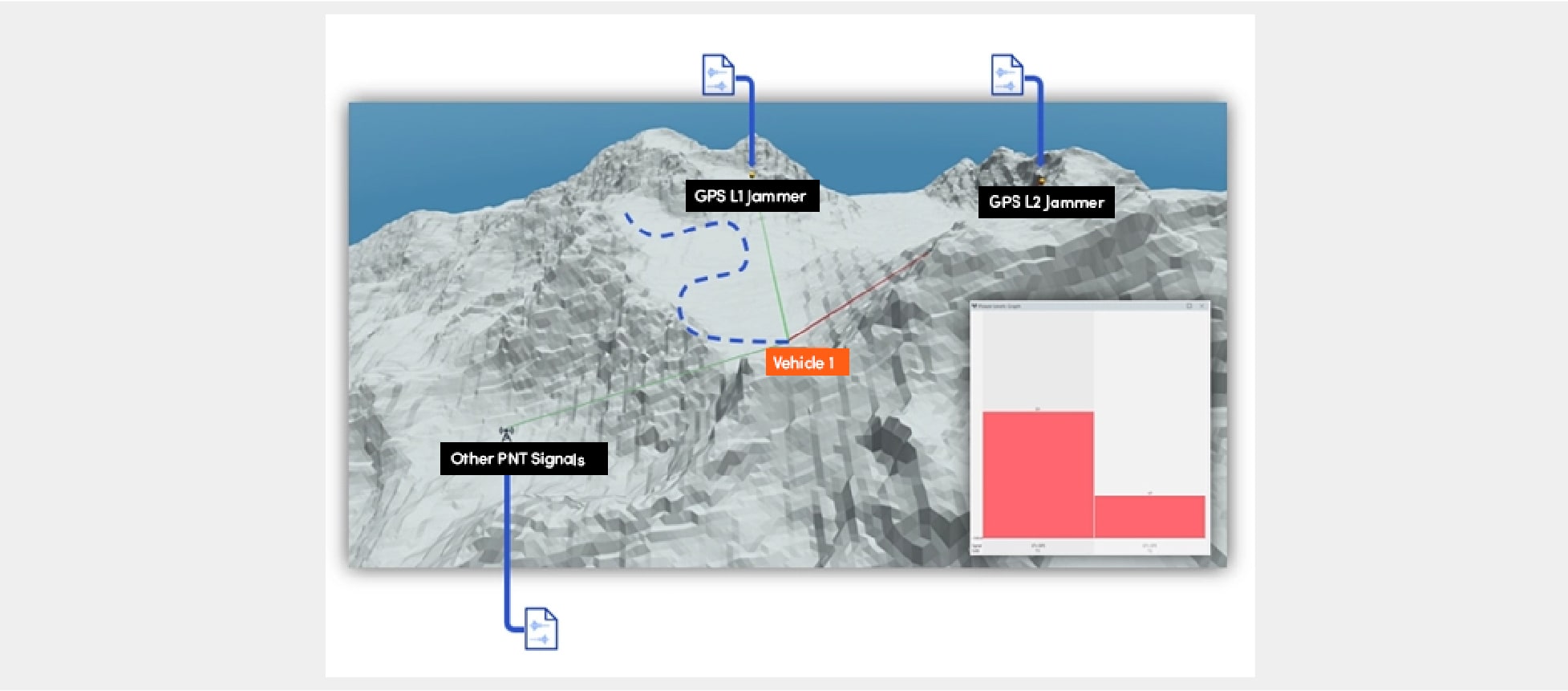

August 1, 2024
Ricardo Verdeguer Moreno

Developers of positioning, navigation and timing (PNT) signals have long used the I/Q file format to record signals and interference waveforms for replay in a simulator. The ability to inject I/Q-defined transmitters into a GNSS simulator is invaluable for research and development of future signals and custom waveforms, and to evaluate their impact on systems and devices under test.
However, until now this method has had one big limitation. Pre-recorded signals can only be played direct from the file, with none of the effects that occur in the real world when a transmitter and/or receiver are moving relative to the other. Effects like Doppler offsets, signal delays and fluctuating power levels typically aren’t computed and applied in the same way as they are for native GNSS signals, making test scenarios less realistic.
In addition, if developers want to test with multiple I/Q-defined transmitters—for example, to create a scenario involving several frequency jammers located over a broad geographical range—they must record each transmitter separately for replay in the simulator. That means a lot of work and a lot of data to store and transfer.
Spirent is the first simulator manufacturer to address these limitations, with the patented SimIQ spatial awareness feature of PNT X, the world’s most advanced PNT simulation platform.

SimIQ spatial awareness automatically applies realistic signal effects to pre-recorded I/Q files, adding power level offsets, signal delays and Doppler shift to the transmitted signals based on the relative positions of transmitter and receiver as the device under test and/or the transmitters moves. The signal effects are thus generated coherently with trajectories, bringing critical realism into the scenario.
While this was always possible with the GNSS signals generated by the simulator, the ability to apply the same effects to pre-recorded I/Q files, for both ground-based and space-based transmitters, is potentially game-changing for signal architects and receiver developers and integrators.
The type of realism now possible with I/Q files means more testing and development can be done in the lab before the need to conduct expensive field testing with live signals and interference sources. For developers who have previously had to wait for access to a test range, to take part in an open-air jammer test, or to wait for simulator manufacturers to implement new signals, it means some development cycles can be completed faster, potentially accelerating time to market for new signals and equipment.
Another game-changer is the ability to use the same I/Q file to define different transmitters in a multi-transmitter scenario. Developers need only inject one master file and SimIQ Spatial Awareness will superimpose the relevant RF signal effects on to each simulated transmitter, requiring much less data to be created, transferred and injected into the simulator.
SimIQ spatial awareness brings even more realism into dynamic test scenarios when paired with another key feature of PNT X: 3D terrain modeling. This is a new visualization tool that uses a 3D rendering of the scenario environment to generate accurate obscuration, diffraction and multipath signatures relative to the location of the receiver’s antenna.
Using 3D terrain modeling with SimIQ spatial awareness means that as well as applying motion-related effects to custom I/Q-defined signals, developers can also have realistic obscuration, diffraction, and multipath effects to the signals caused by obstacles in the environment applied automatically. This makes it possible to simulate very complex scenarios with a high degree of realism.
Users can also import their own 3D maps or use pre-loaded maps of cities and landscapes around the world. As shown below, the tool can optionally visualize the terrain for real-time insight into the effects of the physical environment on signal reception.

For example, as the above illustration shows, developers can model and visualize an environment where an all-terrain vehicle is navigating a mountainous area in the presence of multiple signal jammers, with intermittent signal obscuration caused by the terrain. The effects applied to all of these signals will provide an accurate reflection of how the signals and interference waveforms in the scenario would be experienced at the receiver in the real world.
SimIQ spatial awareness and 3D terrain modeling are just two of the many groundbreaking features offered with PNT X, designed to test the limits of receiver performance for mission-critical systems.
As the world’s most advanced PNT simulation platform, it brings unprecedented realism to the PNT test lab, enabling more testing to be done earlier and fostering utmost confidence in the test results. If you’d like to learn more about Spirent PNT X, contact us.